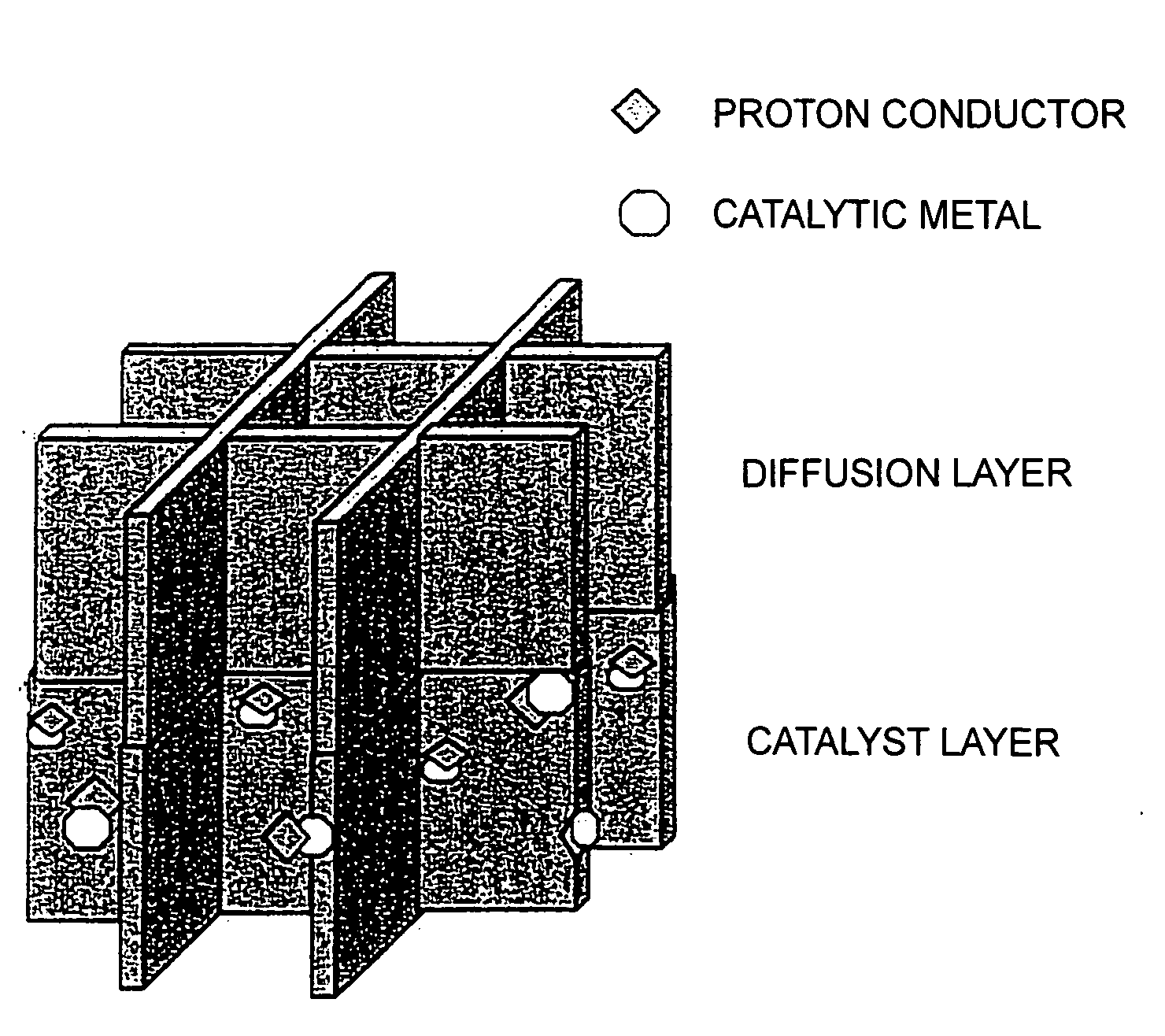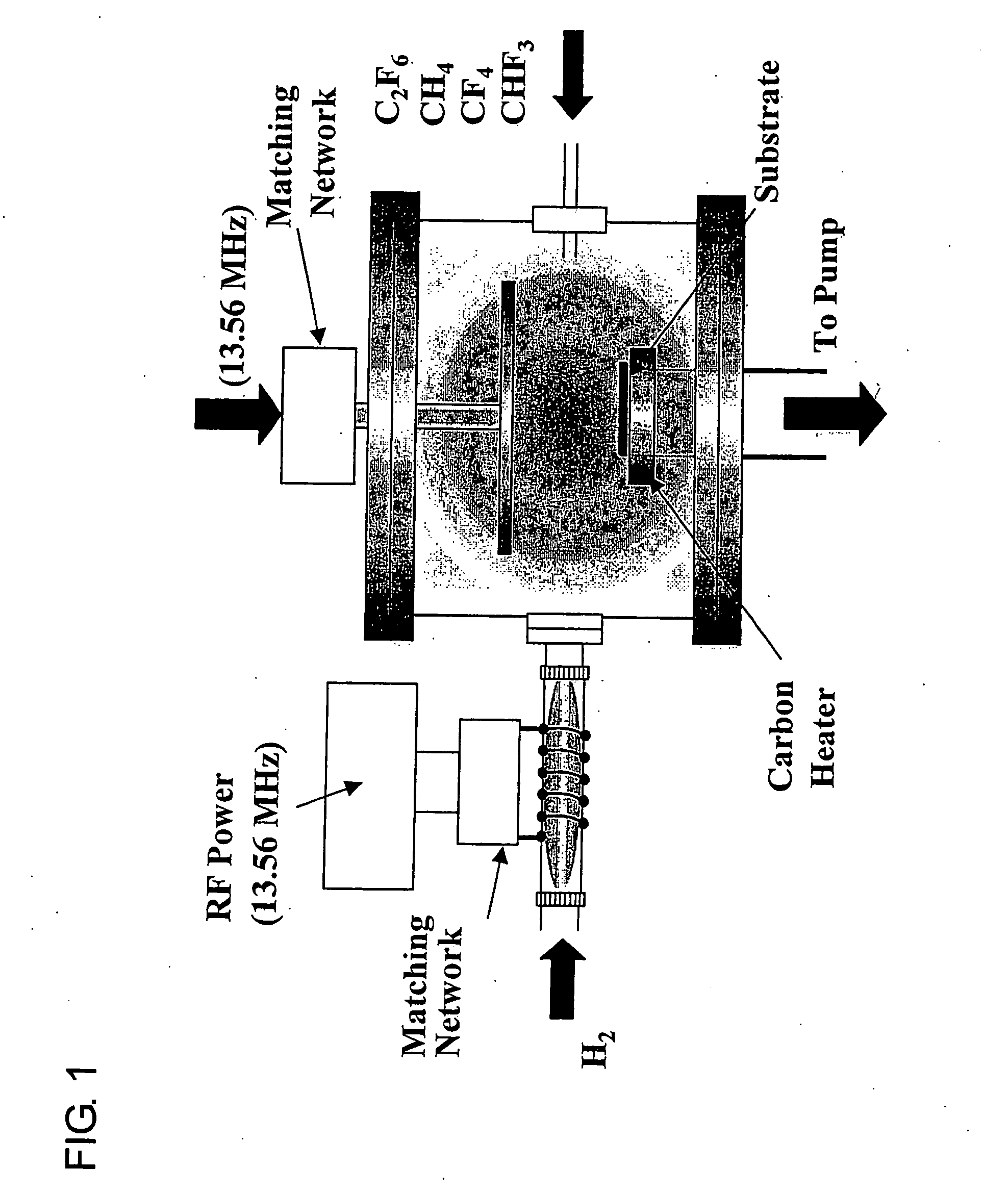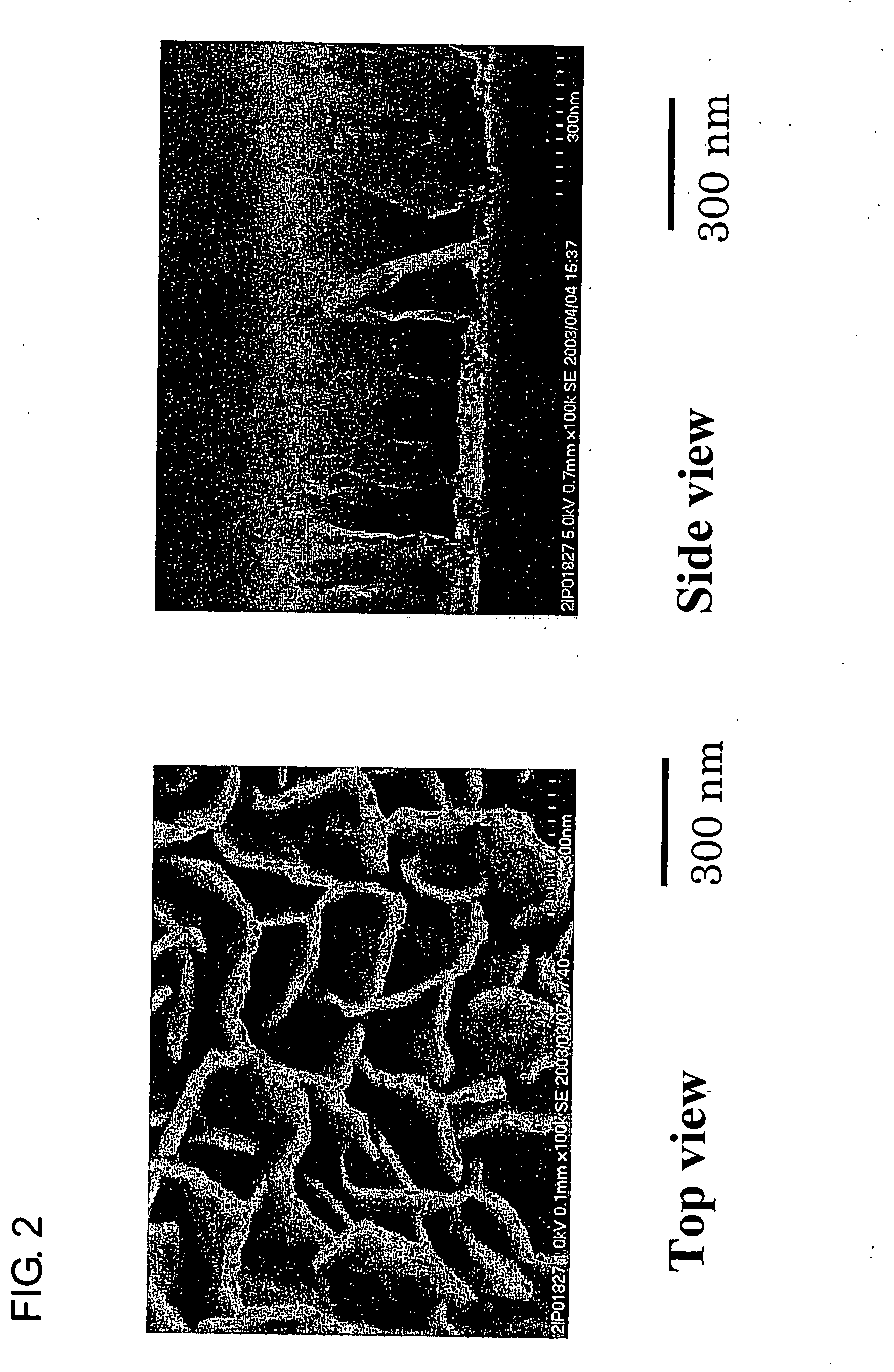Fuel Cell Structure and Method of Manufacturing Same
a fuel cell and electrolyte technology, applied in the manufacture of final products, cell components, electric/magnetic/electromagnetic heating, etc., can solve the problem of insufficient improvement, and achieve the effect of reducing manufacturing costs, improving gas dispersibility, and greatly simplifying the manufacturing process
- Summary
- Abstract
- Description
- Claims
- Application Information
AI Technical Summary
Benefits of technology
Problems solved by technology
Method used
Image
Examples
example 1
[0045]A process is described for manufacturing a diffusion layer-catalyst layer integrated thin-film using a diffusion layer-catalyst layer one-step manufacturing method shown in FIG. 6. In the present example, CNW is used for both the diffusion layer and the catalyst layer. First, using a plasma CVD apparatus shown in FIG. 6, CNW is manufactured on a separator as the diffusion layer. Thereafter, the manufacturing conditions are modified and CNW is manufactured, while at the same time the CNW surface is modified with a catalyst component and an electrolyte by means of laser, arc discharge, or plasma. In this way, a diffusion layer-catalyst layer integrated thin-film is completed. Conversely, it is also possible to manufacture a catalyst layer from the side of the electrolyte and to fabricate the diffusion layer finally. The proton conductor consists of a substance having a sulfonate group, phosphonate group, hydroxyl group, imidazole group, solid acid salt, tropolone, ionic liquid, ...
example 2
[0046]FIG. 7 shows an example of a method of providing openings by plasma etching. In this method, metal nanoparticles are deposited on the surface of CNW by means of arc discharge or plasma discharge, for example. The amount of deposit in this case is such that the CNW is visible. Thereafter, the CNW alone is etched, thereby providing nano-size through-holes. For example, by exposing the CNW of FIG. 7 in oxygen plasma, etching only proceeds in the portions of the gaps between the metal fine particles, so that through-holes are provided at those portions.
[0047]In accordance with Examples 1 and 2, the following advantages can be obtained: (1) since the diffusion layer-catalyst layer integrated thin-film can be formed at once in the same chamber, the number of steps can be reduced and therefore cost can be reduced; and (2) since the diffusion layer-catalyst layer is continuously formed, there is no contact resistance, whereby electricity generation loss in the fuel cell can be reduced...
PUM
| Property | Measurement | Unit |
|---|---|---|
| Electrical conductivity | aaaaa | aaaaa |
| Structure | aaaaa | aaaaa |
| Efficiency | aaaaa | aaaaa |
Abstract
Description
Claims
Application Information
 Login to View More
Login to View More - R&D
- Intellectual Property
- Life Sciences
- Materials
- Tech Scout
- Unparalleled Data Quality
- Higher Quality Content
- 60% Fewer Hallucinations
Browse by: Latest US Patents, China's latest patents, Technical Efficacy Thesaurus, Application Domain, Technology Topic, Popular Technical Reports.
© 2025 PatSnap. All rights reserved.Legal|Privacy policy|Modern Slavery Act Transparency Statement|Sitemap|About US| Contact US: help@patsnap.com



